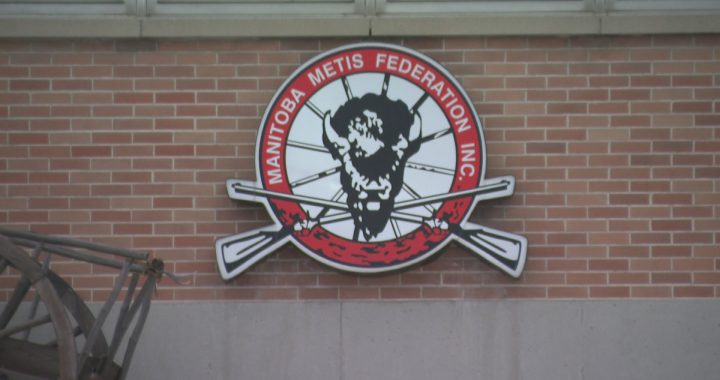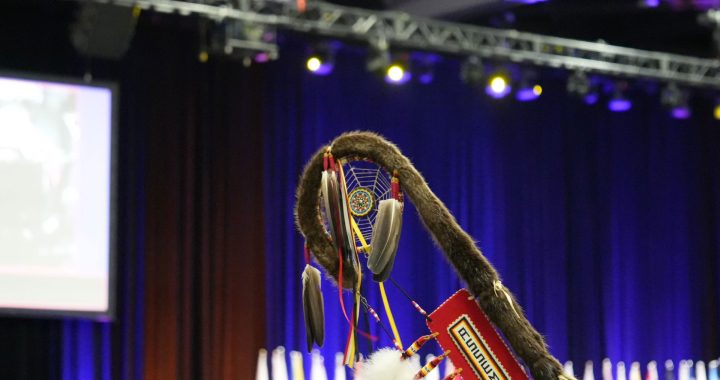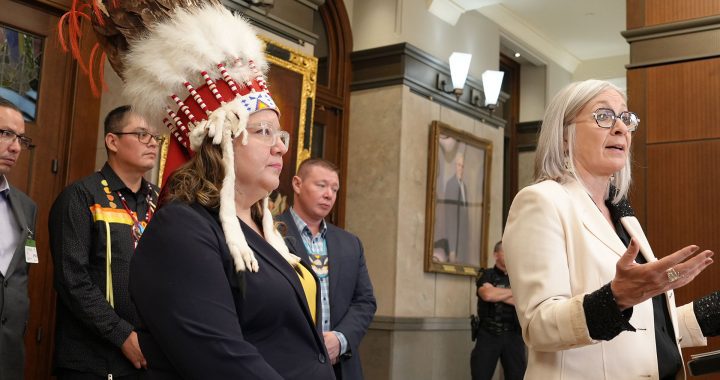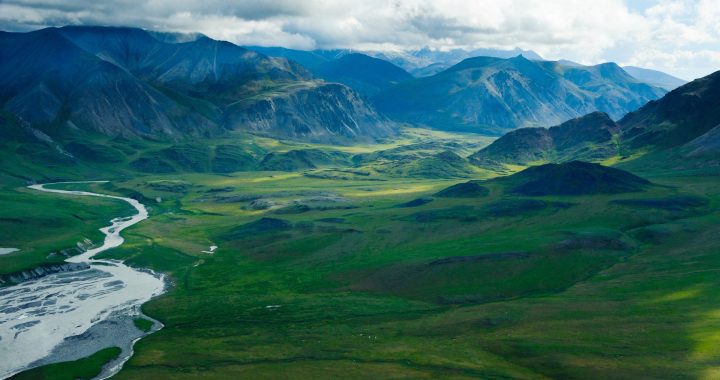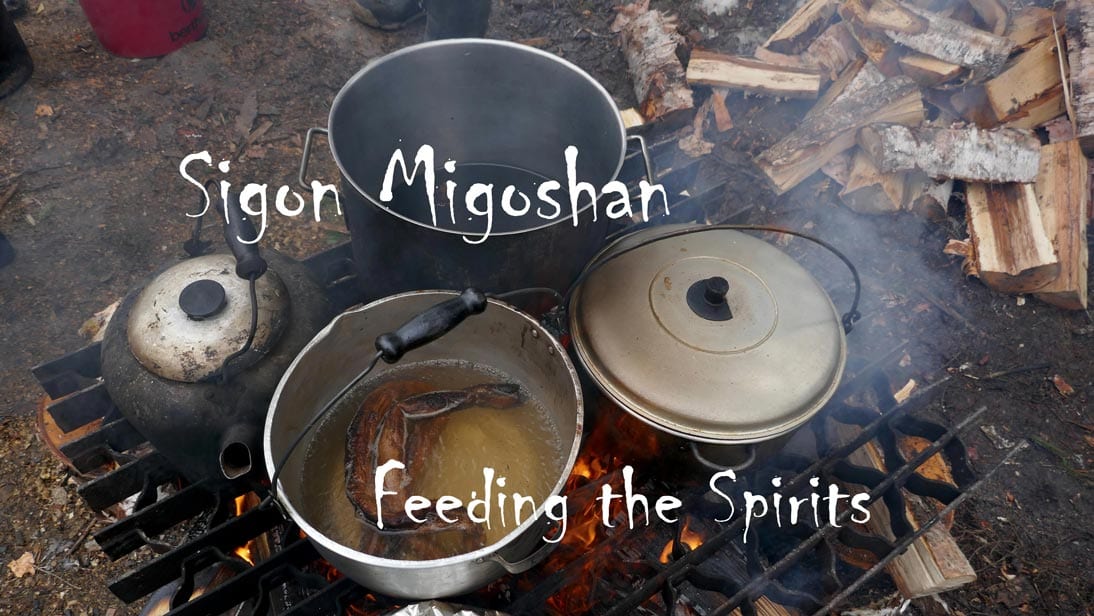
Today Charles Ratt is expecting guests.
A lot of them.
Which is why he finds himself in the middle of the forest before 9 on a Saturday morning, pouring litres of maple syrup into a container.
The thick brown liquid is the end result of tapping trees around his camp and hours of boiling the maple sap in large black cauldrons over a fire.
He pauses a moment to pick out a stray piece of bark out before closing the lid and securing the syrup to the back of his snowmobile.
“Been doing sugar bush since I was 16,” says the 45-year-old Algonquin man, whose friends call him Chuck.
He gets on his snowmobile and bombs downhill, using his left arm to knock branches away from his face along the way.
Once the ground levels out he does his best to manoeuvre off the parts of dirt road that have started to emerge from a lethargic spring thaw.
Upon arrival to his pick-up truck, he abandons the old snowmobile by the side of a logging road, loads the syrup in the back, and commences the drive back towards the highway.
Next to him in the passenger side are two rifles, a .22 and a .410 calibre for small game.
“I always have my guns near me this time a year,” Ratt says.
Like many Algonquin who live in Québec’s La Vérendrye wildlife reserve, Ratt counts on the land to provide much of the food for his family.
For one thing, it’s cheaper than driving an hour to drop money on a can of maple syrup at the nearest grocery store – and here in the heart of Algonquin territory, hunting and gathering is about more than sustenance.
It’s an act of cultural survival.

(Dozens of families live beside the La Vérendrye airstrip which hasn’t been in use since the 1980’s Photo: Tom Fennario/APTN)
Highway 117 slices all the way through the 12,500 square km La Vérendrye wildlife reserve 4 hours north of Montreal.
Some of its 4,000 lakes can be glimpsed out the windows of Chuck’s speeding truck, peeking out through the endless rows of spruce, pine, and birch.
Keep looking out the window, and the occasional sign of human life will also materialize.
The wood skeleton of a teepee standing guard to a dirt road. A piece of lumber with a medicine wheel painted on it nailed to a tree at the opening of a path.
Some estimates say nearly a hundred people inhabit these woods, off the grid, trying to live off the land as much as possible.
Chuck Ratt is one of them.
He approaches a sandy turn-off and hangs a left off the highway and into the trees.
“We’re turning into what they call the old airport in La Vérendrye,” he says. “The place where we call home.”
The two-kilometre airstrip that Chuck and his family live next to hasn’t been in use since the early 1980’s.
Despite being less than a hundred metres from the highway, it’s not visible through the thicket.
It also happens to be right next to Lac Lucie, a major source for Chuck’s fish and game.
Aside from the lake, he says he chose this spot because it’s easy to plow in the winter and to be close to some like-minded folks.
“Some elders live right over there,” he says gesturing off into the woods as he drives by the airstrip, although nothing is visible to the naked eye through the growth.
In the eyes of Canada, Chuck and most other Algonquin living off the grid in La Vérendrye belong to the Algonquins of Barriere Lake, who live on the reserve of Rapid Lake.
But many traditionalists, like Chuck, left the reserve over 20 years ago in protest of how the Algonquins of Barriere Lake were electing its leaders.
The dissident Algonquins still live near the reserve, but prefer to not be associated with it.
Instead many go by the name of Anicinabe Nation of the Ottawa River Watershed, and have built their own homes from scratch in the wild.
They have no running water and use generators for electricity, but they say they have what’s most important to them: sovereignty from the Indian act system.
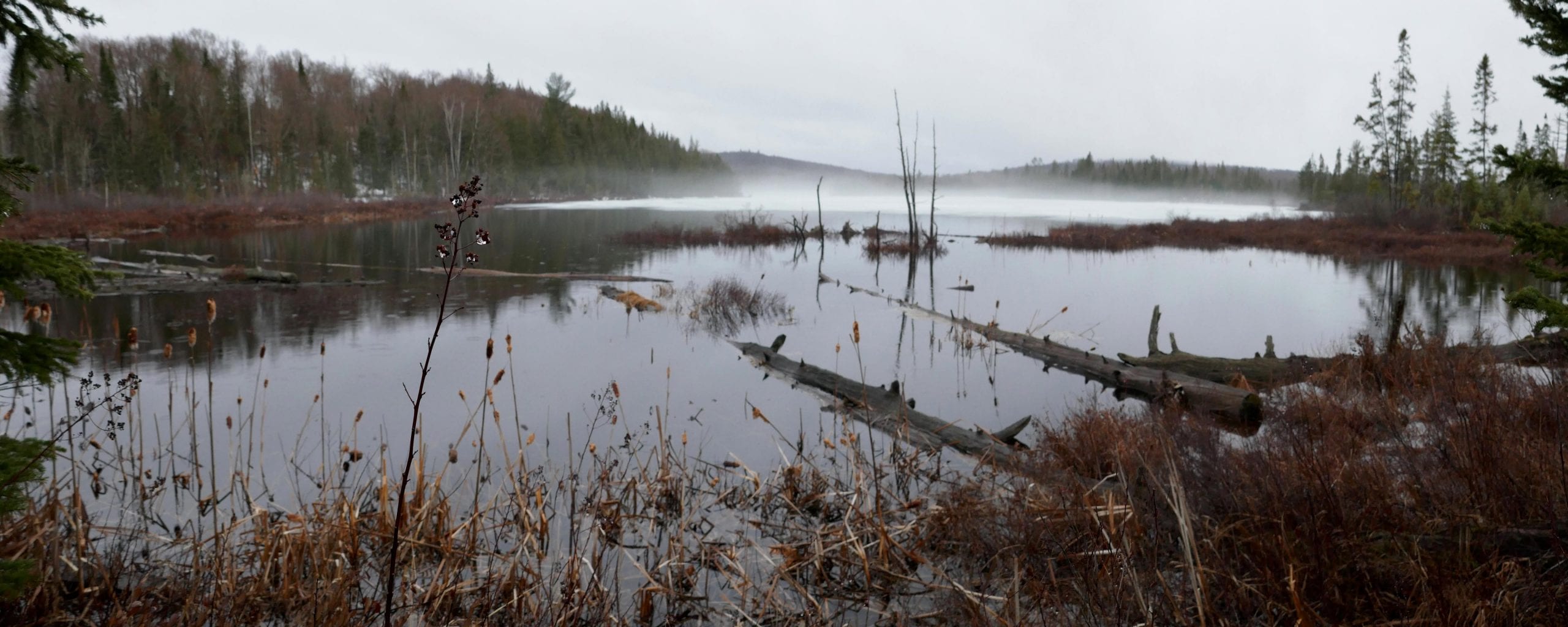
(An abundance of wildlife inhabit the many lakes in La Vérendrye. Photo: Tom Fennario/APTN)
Chuck drives a little bit past the home he built and pulls off to the side of a campfire.
There his wife Tina Nottaway is helping traditional Elder Lisa Thomas shape birch bark into a basket.
Thomas quickly flashes the birch over the flames to make it more malleable before using a knife make two even slits at either end.
She then uses the cuts to fold the birch bark into a vessel, before handing it off to Nottaway to pin with two twigs she fashioned into pegs.
Today is Sigon Migoshan or spring feast, and the baskets will play an important ceremonial role.
“There’s one for each spirit,” explains Elder Joseph Wawatie Jr. “So people will put food in this basket for the good spirit, or as we call him grandfather.” Wawatie picks up the other previously made identical basket.
“And this one will be for the bad spirit, the Wedigo, That spirit is…” Wawatie searches for words. “Kind of like a bigfoot creature.”
After the feast, the baskets will be left in the woods for the spirits to find on their own. But these days, there’s more than just spirits to worry about in the forest.
“A lot of animals have been disappearing, moose, partridge,” says Wawatie. “For the people who live off reserve, it’s very crucial that they have food on the table. It could be birds, it could be 4 legged, it could be fish. This is the stuff we eat, and it’s in our DNA.”
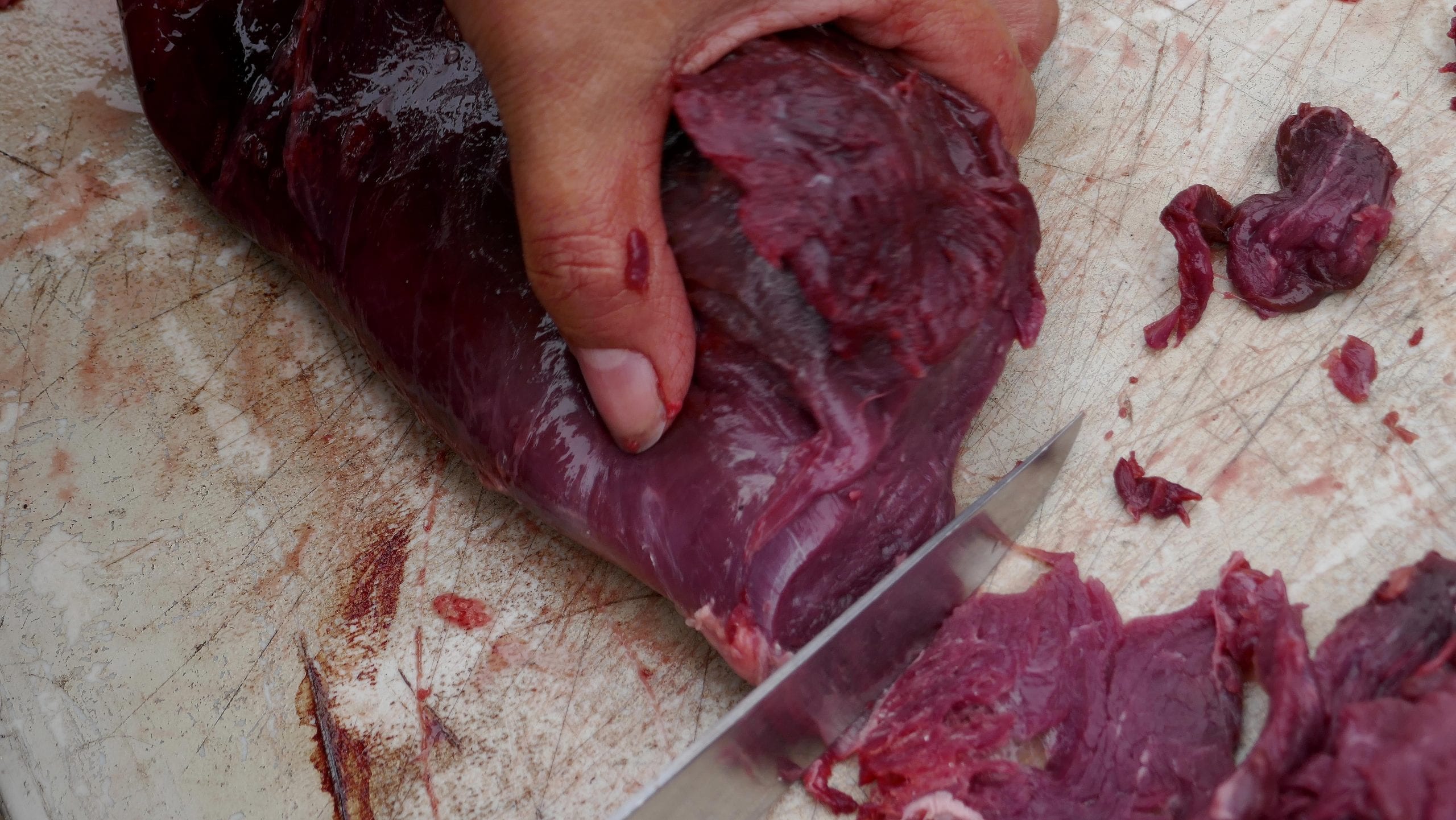
(Tina Nottaway cuts up a piece of moose tenderloin Photo: Tom Fennario/APTN)
Like many here, Wawatie blames years of logging on the territory for hurting hunting.
But that doesn’t concern him nearly as much as what he see as the greatest threat: a proposed copper mine.
“Both [water] reservoirs are going to be contaminated if they let the mining go. They’re going to ruin our way of life, they’re going to ruin our way of eating things,” he says.
For now, Wawatie and others can take solace that the project is on the back burner.
The mining company with permits for the land, Cooper One, is currently duking it out with the Quebec government in superior court over a denied forestry permit.
Should Cooper One win, they’ll have the legal right to begin drilling.

(Jeanne Nottaway smokes moose intestines over cedar Photo: Tom Fennario/APTN)
With the constant threat of looming resource extraction, community events like Sigon Migoshan are more important than ever for people like Shannon Chief, who helped organize the event.
She, her mother Lisa Thomas, and Tina Nottaway are the nerve centres of the feast, spending hours by the fire preparing traditional food in an arduous fashion.
Among Chief’s many tasks is burning the hair off of parts of the moose that are hard to skin by placing it on top of the fire and then scraping off the burnt remnants.
It takes patience and concentration to do properly.
“[We] come together to try to cook like the old ways. Maintain the tradition of eating our wild food without any salt, pepper, or use any sugar with our teas,” Chief says.

(Labrador tea with Winter greens is sweetened with sap water. Photo: Tom Fennario/APTN)
Jeanne Nottaway is in charge of cooking moose intestines for the feast. She pulls on a pair of gardening gloves before placing a layer of cedar over the fire.
After shooing away a dog she takes a two-metre long intestine and curls it on top of the smoking cedar as it burns away.
Once the cedar has turned to embers Nottaway darts her hand into the fire, pulls away the entrails while simultaneously placing a fresh batch of cedar on the fire.
Soon she is wrangling two large moose intestines, whirling them in and out of the cedar smoke.
When she is done a is grill placed on top of the campfire and the smoked moose offal are placed in a pot to be boiled.
Soon it’s joined on the grill by beaver, moose tenderloin, a steaming kettle with Labrador tea and winter greens inside, walleye, goose and a kind of tripe with religious implications, although not your typical spiritual sense.
“This is why they call it the bible,” says Chuck’s wife Tina Nottaway as she thumbs through the many layers of a moose stomach “they’re like pages!”

(Traditional elder Lisa Thomas prepares brich bark for basket making Photo: Tom Fennario/APTN)
As the food begins to pile up so do the people.
By noon Chuck and Tina’s house is packed with a few dozen people, as the 30 and younger crowd show up with their kids.
Chuck is particularly pleased to see his toddler grandson. Days like today are done most of all for the youth.
“It’s just to slowly decolonize back to the old ways of how our people use to eat their foods,” says Chief. “We’re showing it to the kids so it sticks in their memories, and then one day they become the future leaders of how to maintain the culture.”
By 2 o’clock everyone is ravenous and ready to pounce on the spread laid before them buffet style, but wait patiently for Elders Lisa Thomas and Joseph Wawatie Jr. to say prayers in Annishnabee.
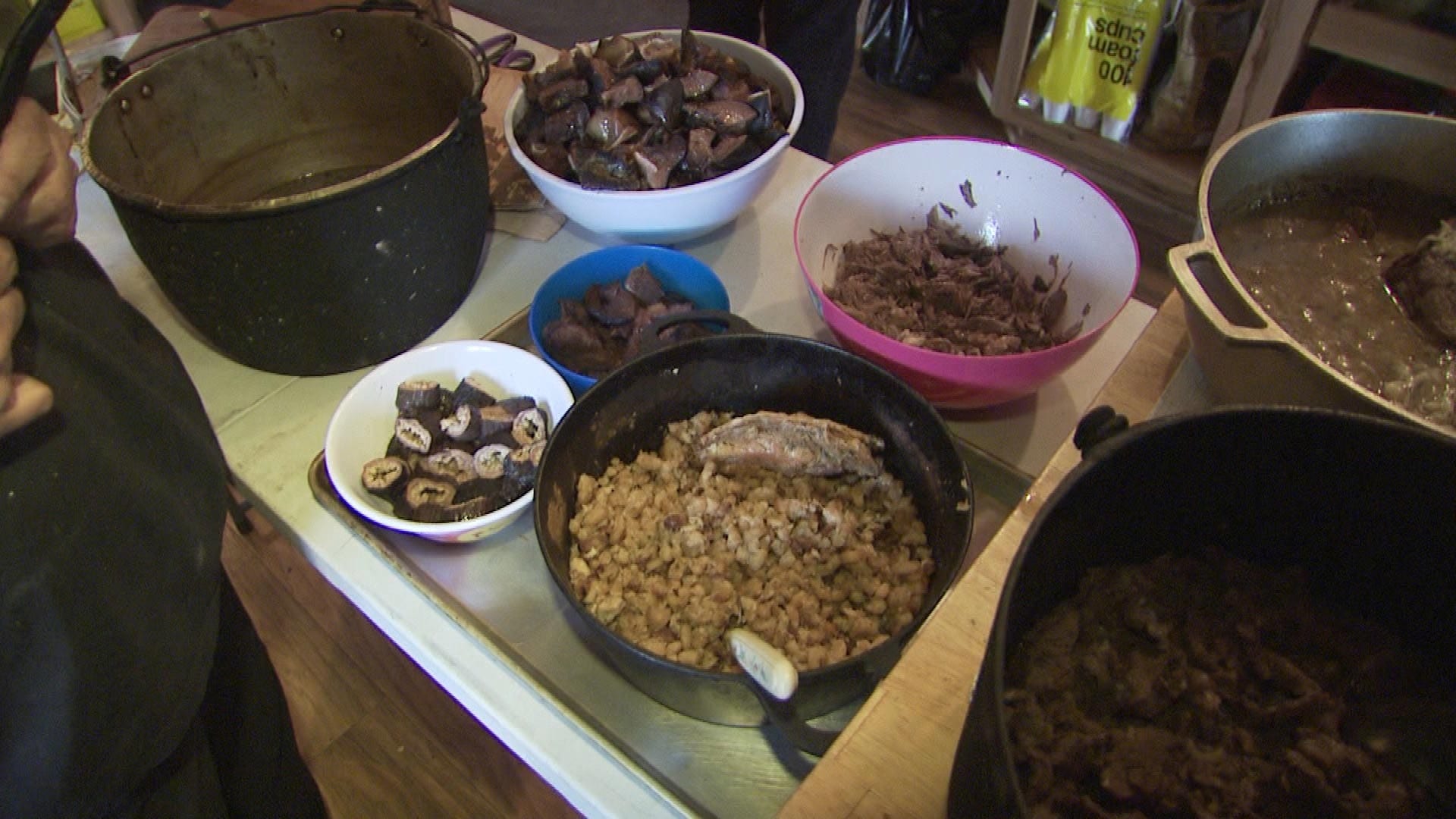
(An assortment of traditional food served buffet style. Photo: Tom Fennario/APTN)
Wawatie takes this time to explain to the group that while going around the table, everyone is obligated to put a little bit of food in the good spirit basket after serving themselves, and then required to leave some scraps in the bad spirit basket after the meal.
He then proceeds to stand guard over the baskets, policing the young who are new to the tradition in Annishnabee while making a small pipe for the grandfather spirit out of a piece of birch bark.
“Don’t put bones in there,” he tells a teenager. “You want grandfather to choke?”
Meanwhile Shannon Chief is eating her meal in a traditional fashion – with her fingers on a plate made out of birch bark.
Chief has intentions of making a permanent traditional cultural centre at the other end of the airstrip.
“I thought that this idea of constructing a building that could be utilized as a lodge for culture, this would be a way to preserve our way of life with the land,” she says.
Once the meal winds down, Wawatie covers up the baskets with more birch bark, tying them down with rawhide laces.
“If we forget this tradition, then who are we?” he explains before leaving the house to bring the baskets to the forest.
Once there he says he will put one high in a tree for the Wedigo, and then one on the ground that will be easy for Grandfather to find.
This way the good and bad spirits of traditional Algonquin land will be fed, ensuring at least one more good season of traditional living off the land.
For the Algonquin living in La Vérendrye on this Spring day, taking it one season at a time is good enough for now.

(Joseph Wawatie Jr. with traditional baskets Photo: Tom Fennario/APTN)
Tom Fennario




